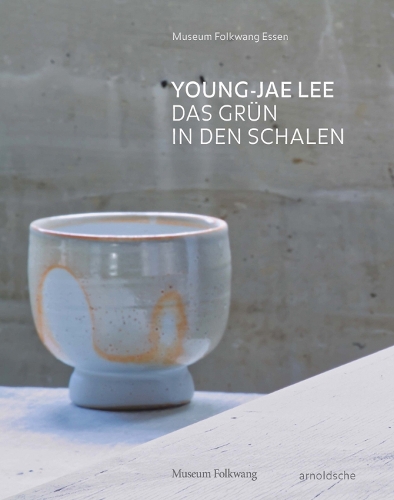
Young-Jae Lee: Das Grn in den Schalen
(Paperback)
Publishing Details
Young-Jae Lee: Das Grn in den Schalen
By (Author) Gisela Jahn
Edited by Nadine Engel
Edited by Museum Folkwang
Arnoldsche
Arnoldsche
1st January 2021
Germany
Classifications
General
Non Fiction
Ceramics, mosaic and glass: artworks
History of art
730.92
Physical Properties
Paperback
120
Width 165mm, Height 210mm
340g
Description
A select presentation of brilliantly glazed bowls provides an overview of Young-Jae Lee's form and colour schemes, presented in German.
Since 2008, Young-Jae Lee (b. 1951), head of the ceramic workshop Margaretenhhe in Essen, has been creating Spinatschalen (spinach bowls) bulbous vessels atop simple foot rings whose multifarious glazes lend the striking deep bowls their special aesthetic appeal.
Behind the purism of Young-Jae Lee's bowls lies a long history, which harks back, via Japanese teabowls, to Korean vessels of the Joseon Dynasty (13921910), the ceramicist's style is very much defined by this period's Buncheong era (to approx. 1592), in which its ceramicists represented a renewal, a departure from an outdated ideal of beauty, one in which they renounced the elite in favour of the everyday.
One could say that Young-Jae Lee brings the tradition of ideal aesthetic pairings so characteristic of the Joseon era into the present the simple and noble, the emotional and restrained, and the diversity in the similar, as well as the dis-mantling of simple categories of value. In doing so she breaks away from the narrow definition of the teabowl: in Japan there was a wide variety of bowls, manufactured in Korea, that had in fact been formed for all kinds of purposes, including tea perhaps even for spinach. Yet an aesthetic leaning towards Japan long defined the European gaze on East Asian ceramics and distracted from their multifarious origins.
This publication unlocks a piece of ceramic history. It negotiates the historical and cultural relationships between Japan and Korea, where the teabowl was created, and portrays the German reception of East Asian ceramics at the dawn of the twentieth century by means of examples from Museum Folkwang.
Author Bio
Nadine Engel has been curator-in-charge of art from the 19th and 20th century at Museum Folkwang since 2018. There she oversees the Global Art, Archaeology, and Applied Art Collection. Gisela Jahn curated exhibitions on Japanese ceramics and taught at the Institute for Asian Art at the University of Heidelberg and at the Freie Universitt, Berlin. She is the author of Meiji Ceramics: The Art of Japanese Export Porcelain and Satsuma Ware (2004) and Japanische Keramik: Aufbruch im 20. Jahrhundert (2014). Together with Young-Jae Lee, she has worked on exhibitions at the Museum fr Asiatische Kunst, Berlin (1996), Museum Morsbroich, Leverkusen (2004), and the Pinakothek der Moderne, Munich (2006).
